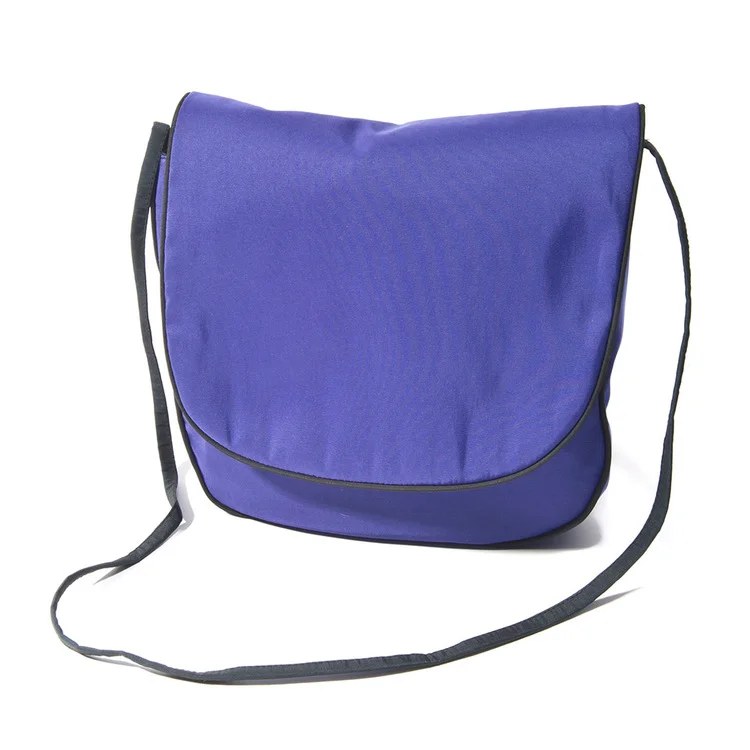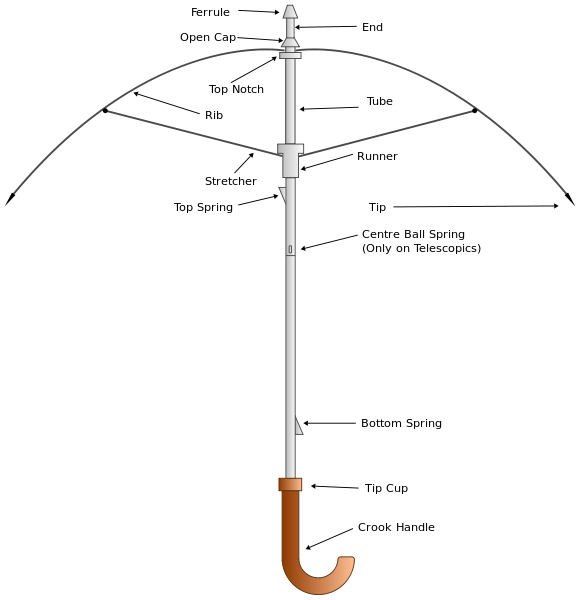Going In Style Has Launched an Adapter Site
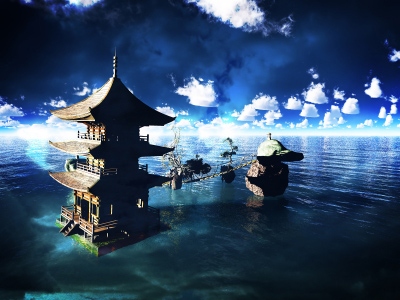
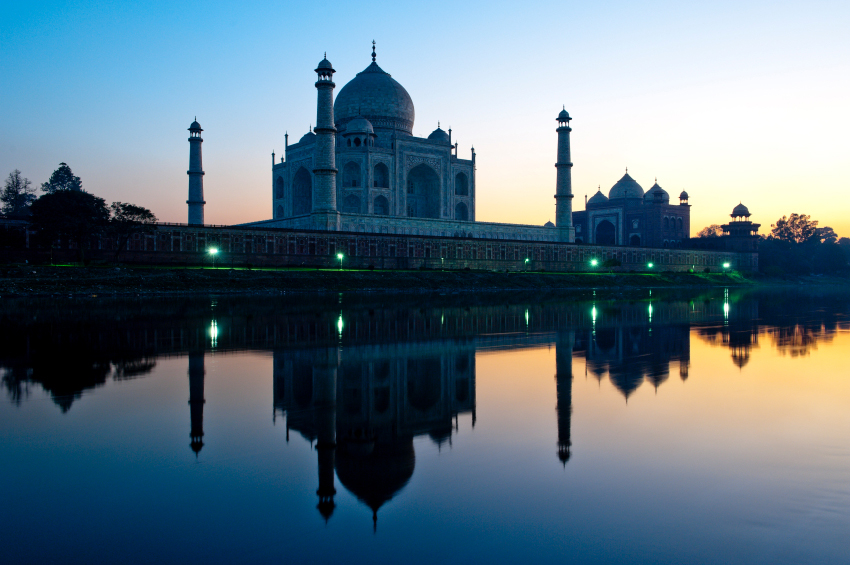
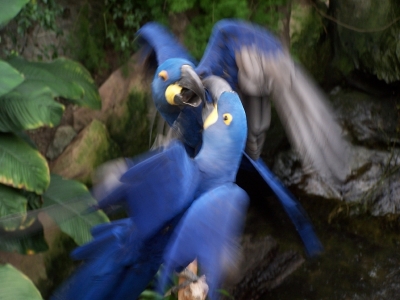
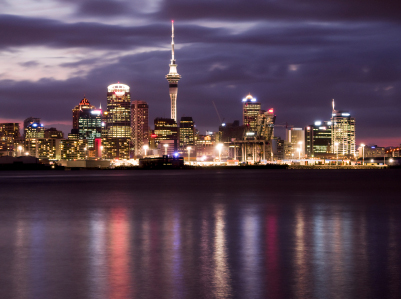

Going In Style has a new Travel Adapter Website so that no matter where your travels take you, you will have the adapters you need to plug in your appliances. Going In Style's new adapter site is easily searchable for the adapters you need.
This new adapter site makes it easy to find the adapter you need for your destination country. You can easily search in alphabetical order by country A to Z or by world region including Caribbean, Africa, South America and Oceania.
As a bonus, if you order a Deluxe Adapter Kit, that includes both grounded and non grounded adapters it will ship with Priority Mail Upgrade so you will have your adapter to you in no time. The Deluxe Adaptor Kit also comes with a handy, drawstring adapter bag for traveling.
An adapter plug is necessary if you are bringing your North America appliances such as cell phone chargers, hair dryer, iPad charger and laptop on your trip. In the United States we use appliance plugs with two flat pins, however other countries have various pin configurations for their electrical outlets. In order to plug your United States plug into a foreign outlet you will need an adapter plug. Almost anyone that travels abroad will need to bring an adaptor with them on their trip.
Whether you are traveling to Bhutan, India, Brazil, New Zealand or are touring Europe, you can easily find the adapter you need for your trip.
You can purchase travel adapter plugs, converters, and travel phone chargers locally at our flagship travel store at Stanford Shopping Mall in Palo Alto, California. We carry adapter plugs for every country and device at Going In Style Travel Accessories, 609 Stanford Shopping Center, Palo Alto, CA 94304 - Visit the Stanford Travel Store website www.stanfordtravelstore.com for directions to Going In Style.
Mycra Pac Raincoats Ship International Mail
Going In Style will ship your Mycra Pac Raincoat International Priority Mail to a dozen different countries. These posh raincoats look gorgeous and are a unique coat featuring an oversize hood, raglan sleeves and an accordion style collar. Having a lightweight, waterproof jacket that you can throw on at a moment's notice can be a life saver when you are sightseeing in the United Kingdom or commuting to work. No matter what country your travels take you to, these travel raincoats will leave you looking good while staying dry.
To learn more about Going In Style's Overseas Shipping visit the International Shipping page.
Going In Style ships Mycra Pac Rain Jackets and Coats Internationally to the following countries:
You can purchase Mycra Pac raincoats at our flagship travel store at Stanford Shopping Mall in Palo Alto, California. We carry Mycra Pac raincoats, rain jackets, rain hats and rain gear at Going In Style Travel Accessories, 609 Stanford Shopping Center, Palo Alto, CA 94304 - Visit the Stanford Travel Store website www.stanfordtravelstore.com for directions to Going In Style.
Mycra Pac Travel Raincoat Folding Instructions
To Avoid Wrinkles: Fold the coat neatly and tightly before you pack it in your bag. Wrinkles are caused by either stuffing the coat into the bag or movement of the coat inside of luggage. You can remove wrinkles from your coat with a clothes steamer. If you do not have a clothes steamer you can hang your coat in the shower and let the shower steam relax the wrinkles out of the coat, or you can take a hot, wet wash cloth and sponge the coat.
Step 1: Lay the coat out flat and put the bag next to it to envision its width as you fold the coat. Button the two buttons and lay the raincoat flat with front facing up. Next, fold the coat 4 or 5 times from the edges to the center. Remember the raincoat is still long. Note, the width of the folded raincoat should be a little smaller than the width of the bag.
Step 2: Next, starting at the bottom, make folds that are shorter than the height of the bag and fold up from the bottom to the top - as you fold it the coat will seem to get a little bigger so make sure to account for that.
Step 3: Finally, fold to the top of the coat and simply tuck the coat into the hood and it will fit nicely into the bag. Once you fold it a couple of times, you can pack a coat in about two minutes.
You can purchase Mycra Pac raincoats at our flagship travel store at Stanford Shopping Mall in Palo Alto, California. We carry Mycra Pac raincoats, rain jackets, rain hats and rain gear at Going In Style Travel Accessories, 609 Stanford Shopping Center, Palo Alto, CA 94304 - Visit the Stanford Travel Store website www.stanfordtravelstore.com for directions to Going In Style.
History of Raincoats
Mycra Pac Raincoats are made from a nylon polyester blend of fibers. Polyester is a durable fabric that stands up to high heat and will protect the wearer from the sun. Polyester is also mildew resistant. Nylon is lightweight and flexible allowing for greater movement and comfort. Nylon dries quickly and, like polyester, is mildew resistant. The blend of the two fabrics make for a comfortable fit and a long lasting rain coat.
Rain Wear is made from fabric that is specially designed to keep the wearer dry during rain showers. Rain gear fabric is designed to repel and absorb water. Rain coats are made from tightly woven fabric that are often a blend of fibers including synthetic, such as nylon and natural fibers such as wool. Today, modern rain jackets are high tech, comfortable and made for extreme climates. Rain coats are specially tailored for men, women and children. However, rain gear did not start out as high tech, fashionable outer wear. Rain gear has a rich history that is well documented as far back as Ancient China.
Ancient China
For centuries people have been making clothing to protect themselves from the rain. One of the earliest forms of rain protection clothing was designed in Ancient China and were rain capes made of straw or grass. Farmers wore the rain capes while toiling in the dirt and mud during the rainy season. These rain cloaks did a fair job of protecting farmers from the wet weather, but were stiff and heavy. These grass outer garments are well documented in Chinese history through poems that were written around 1,000 AD. As time progressed, new ways to make raincoats were designed. One method was to rub oil on lightweight silk fabric to repel the rain. Also, new grasses and tree leaves were weaved into rain coats that created a more water repellent coat that were a bit more lightweight than the early straw rain cape design. However, the Chinese were not the only ones inventing new garments to protect themselves from inclement weather.
South America
In other parts of the world water proof clothes were being made, such in the damp, wet rain forests of South America. Around 1200 AD, Amazonians used the latex like extract from rubber trees to create a primitive waterproofing for their footwear and clothing (today, the rubber tree is still an important natural resource for natural rubber). When Europeans discovered South America in the 1700s and saw the way that the indigenous people waterproofed their clothing, Europeans followed suit.
Charles Mackintosh, patented innovative waterproof fabric 1823
Europe
In the 1700s Europeans were using rubber to waterproof clothing, however, rubber became sticky and tacky in hot weather and extremely stiff in cold weather. Then in 1823 a breakthrough in waterproof clothing was made by Charles Mackintosh, a Scottish chemist, who patented a new method of using rubber to waterproof clothing. Mackintosh first started by making the new rain gear in his family's textile factory. In 1843, Mackintosh began mass manufacturing of the water resistant clothing through a merger with a large clothing manufacturing company.
Mackintosh's method of water proofing fabric was called vulcanization, which unlike natural rubber, allowed the rubber to move, maintain its shape and not become sticky in hot weather. Mackintosh, instead of covering fabric in rubber, used the rubber as a lining inside two pieces of fabric.
In 1851 Bax & Company came onto the waterproofing scene and introduced the first waterproof wool, branded Aquascutum. John Emary, a tailor focusing on high ends menswear, developed this waterproof wool material. This wool material was chemically treated and designed to shed water. This clothing designed meant that the fabric remained lightweight and breathable, yet water resistant. With this new technology and new demand for water resistant fashion wear, Burberry came introduced their brand in the late 1800s. Burberry specialized in tightly woven, wool fashion outer wear featuring appealing colors and designs for the time. Then in 1914 WWI began, and the demand for military rain gear skyrocketed. Burberry was contracted to supply rain resistant trench coats to the British Army. Burberry made modifications to the trench coat design to accommodate military requirements such as shoulder straps and a D ring. Military personal began wearing their trench coats when returning to civilian life and the waterproof trench coat became the popular fashion outer wear of the time.
United States
The United States entered into WWI beginning in 1917. When the United States went to war US military uniforms followed the trend of the water resistant wool trench coat . The wool trench coat became popular for fashion rain wear in the United States.
McCall cover girl 1943 wearing vinyl rain coat
After the start of WWII, military research lead to improved rain wear technology. Lightweight, breathable fabric was designed my improving upon wool blend fabric and chemically treated fabric. Vinyl rain wear also became popular in the 1950s because of its flexibility and water proof abilities. However, vinyl is not breathable and lost popularity when more advance rain proof wear came on the scene. Synthetic fabric such as nylon was waterproof and breathable.
Today, rain coats are very high tech and come in many kinds of fabrics including natural and synthetic fibers. Not only are rain coats functional rain jackets are also a must have fashion accessory for anyone living in a rainy climate. Mycra Pac Rain Coats are designed and manufactured in the United States and are made from a nylon polyester blend. A rain coat that is nylon polyester blend means that the rain coat is durable, lightweight and breathable.
You can purchase Mycra Pac raincoats at our flagship travel store at Stanford Shopping Mall in Palo Alto, California. We carry Mycra Pac raincoats, rain jackets, rain hats and rain gear at Going In Style Travel Accessories, 609 Stanford Shopping Center, Palo Alto, CA 94304 - Visit the Stanford Travel Store website www.stanfordtravelstore.com for directions to Going In Style.
Types of Umbrellas
There are many types of umbrellas on the market today depending on your needs and climate. Some locations are rainy and windy while other destinations, like Seattle, are cloudy and drizzly. Here is a list of different types of umbrellas so you can hopefully find the best umbrella for your climate and rain gear needs.
Vented WindPro Umbrella by Shed Rain
High Wind / Wind Resistant: Wind resistant umbrellas are designed to hold up well in windy weather. Some umbrellas can break in the wind rendering the umbrella useless against the rain. High wind umbrellas are engineered with a vented, double, canopy to allow wind to pass through but not water. A wind resistant umbrella may also be designed with a sturdy frame and ribs made from a material such as fiberglass.
Auto Umbrellas: Automatic umbrellas can open up with a push of a button with a telescopic shaft. Usually automatic umbrellas have a straight handle with a button located on it. When you push the button the umbrella opens in a two part motion. The shaft of the umbrella becomes longer and the canopy of the umbrella opens up. Automatic umbrellas open up faster than mechanical ones for those unexpected downpours. Since the shaft can shorten, it makes for a more compact umbrella that can be carried in a purse or briefcase.
High fashion / Designer / Artistic: Designer umbrellas are not only functional, but also fashionable. High fashion umbrellas will have a beautiful design on the tent of the umbrella, sometimes with the designers logo. Designer umbrellas may have intricate handles or ferrules (top) made out of hand carved wood. These pricey umbrellas will be made from fine materials such as leather and maple wood. However, fashion umbrellas also come with a steep price tag with some designers charging upwards of $1,000 for their umbrellas.
Golf Umbrella by Shed Rain
Golf: Golfers often carry a special, over sized, umbrella with them when they are on the course in case of unexpected showers. Golf umbrellas have an extra large canopy with a diameter of about 70 inches across. The shaft of the umbrella is longer as well. This umbrella can be carried in a golf bag with golf clubs. When the rain begins, the umbrella can be opened up and put in the golf bag to keep clubs and golfers dry. The canopy of a golf umbrella has a signature design featuring two colors, with each panel of the umbrella alternating colors.
Compact / Mini: Compact umbrellas are small umbrellas engineered with convenience and portability in mind. Compact umbrellas fold down to make to make the umbrellas smaller and are lightweight for carrying. The arc of a portable umbrella is usually smaller at about 30 to 40 inches, yet still offers ample coverage. The drawback of a mini umbrella is that it is not as durable and won't stand up as well to high winds.
Child / Novelty: Child Umbrellas come in bright colors and a variety of fun designs, such as dragons, fairies, frogs, sports, etc. Umbrellas made for kids will have a smaller arc size of the canopy. Child sized umbrellas are designed to be lightweight and will have a shorter shaft to make it easier to carry and be stowed away in a child's backpack. The tips, or tin cups, of the ribs will have safety tips on the end so that a child doesn't accidentally poke themselves or a classmate. The handle will also be smaller to accommodate child sized hands.
Neon Bubble Umbrella by Totes
Bubble: Bubble umbrellas have a full round dome. The canopy of the umbrella is very rounded like a bubble. The tent of the umbrella is usually clear, plastic and cartoonish looking. Bubble umbrellas can offer more coverage and you can see through the canopy's panels.
Sun: Sun umbrellas are designed to protect users from UV lights of the sun. Sun umbrellas are shaped much like rain umbrellas, but may have a special canopy to reflect UV light from the sun. Large sun umbrellas can be put on a patio to shield many people from the sun while eating outside and smaller personal sun umbrellas can be carried by an individual.
Beach: Beach umbrellas are meant to shield users from hot sun while enjoying the sandy beach. Beach umbrellas will have a wide, flat canopy and an extra long shaft. A beach umbrella may come with an umbrella stand so it can stand alone at in the sand, or it may have a clip to be clipped to a beach chair.
Parasol: Parasols are the first umbrella originally designed to protect users from tanning in the sun and later becoming a fashion accessory for the upper class. In Western culture, in the early 1900s the parasols slowly came out of fashion while tanned skinned gained popularity. Parasols were then replaced by the rain umbrella that we use today. Today parasols are making a slight comeback in western culture because of the fears of skin cancers from UV sun rays.
You can purchase travel umbrellas locally at our flagship travel store at Stanford Shopping Mall in Palo Alto, California. We carry umbrellas from your favorite brands Totes, ShedRain and Cakoon at Going In Style Travel Accessories 609 Stanford Shopping Center, Palo Alto, CA 94304 - Visit the Stanford Travel Store website www.stanfordtravelstore.com for directions to Going In Style.
Parts of an Umbrella
Umbrellas have been used for centuries and have been improved upon throughout history. Today, using modern and old technology, we have the modern open - close umbrella to protect us from the rain. Modern umbrellas have many parts that make umbrellas convenient and useful in inclement weather. Depending on the design of an umbrella, it can have a lot of details to the mechanics of it. Here are the design aspect of a modern day umbrella from the bottom up.
Photo by Richtom80
Handle: The handle of an umbrella makes it easy and convenient to carry and hold onto in wet conditions. here are two main types of handles. First there is a crook handle, which is shaped like a hook, also known as a hook handle. Second, there is a straight handle. The hook handle of the umbrella was designed to not only grip the umbrella handle in the rain, but also to carry your umbrella on your arm so that you could be hands free. The hook also allowed you to hang your umbrella to dry. You can still find many umbrellas with the hook handle, but many modern umbrellas now have a rubber handle. Rubber offers a durable yet comfortable handle when it is raining. Often times modern, straight handle, umbrellas will have a nylon loop to carry your umbrella on your wrist for hands free comfort.
Tip cup: A tip cup is a lip above the handle of the umbrella. This is where the umbrella's canopy rests when it is closed so that it doesn't slide down past the tip cup. Sometimes the tip cup is actually part of the handle and sometimes it is a separate part.
Shaft: The shaft is a pole that makes the body of the umbrella. The pole, or shaft, rises up from the handle and the tip cup. Inside of the shaft are tension springs that assist the umbrella in opening and closing.
Bottom spring: The bottom spring is the spring placed at the bottom part of the shaft (above the handle). The bottom springs allows the umbrella to open and close.
Center Spring (only on telescopics): The center spring allows the shaft of the umbrella to become shorter or longer and acts as a propel in the opening motion of the umbrella. Not all umbrellas are telescopic, therefore not all umbrellas will have a center spring.
Top Spring: The top spring is located up higher on the shaft, but bellow the runner when the umbrella is in its open position. The top spring allows the umbrella to open and close.
Runner: The runner is the part of the umbrella that slides up and down the tube or shaft of the umbrella when you open and close it. It is a T-shaped joint that allows the umbrella to collapse.
Tube: The tube is the space on the shaft between the runner and the top of the umbrella when the umbrella is in its open position.
Rib: The ribs run from the top notch to the seam of the canopy and support the canopy of the umbrella. The ribs are what give the canopy its bubble shape when the umbrella is open.
Stretcher: The stretcher is what stretches out the canopy when the umbrella is in its open position. The stretcher runs from the runner and connects to the canopy.
Top Notch: The top notch is at the top of the umbrella tube. The top notch connects the shaft to the canopy.
Open Cap: The open cap sits above the the canopy of the umbrella on the shaft and keeps the top of the canopy in its place and allows for tension of the canopy when the umbrella is open.
End: Above the open cap is the a pole called the end of the umbrella. The end of the umbrella is still part of the shaft.
Ferrule: The very tip or top of the umbrella, above the canopy, is the ferrule. Ferrules can be plain or decorative and can double as a walking stick or sometimes a weapon. However, keep in mind, most modern umbrellas are not designed as a cane, walking stick or a weapon.
Canopy: The canopy is the tent part of the umbrella that opens into an arc or dome shape and protects you from the rain.
You can purchase travel umbrellas locally at our flagship travel store at Stanford Shopping Mall in Palo Alto, California. We carry umbrellas from your favorite brands Totes, ShedRain and Cakoon at Going In Style Travel Accessories 609 Stanford Shopping Center, Palo Alto, CA 94304 - Visit the Stanford Travel Store website www.stanfordtravelstore.com for directions to Going In Style.




